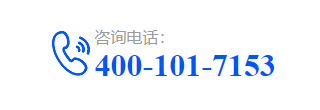

— News —
 National free customer service telephone 400-101-7153
National free customer service telephone 400-101-7153 email:Service@Baijiantest.Com
phnoe:15601902607
telephnoe:400-101-7153
address:No. 700, Yishan Road, Xuhui District, Shanghai
Knowledge Of Testing
Release time: 2025-04-21Popularity:

Flexure testing of finished soles is not only a "quality gate" but also a critical basis for product innovation and user experience optimization. This article explores testing principles, equipment upgrades, industry pain points, and emerging technologies.
Dynamic Flexure Simulation
Static Rigidity Evaluation
| Technology | Traditional Limitations | Modern Solutions |
|---|---|---|
| Loading Method | Mechanical lever loading (low precision, wear-prone) | Servo motors + precision sensors (error ≤ ±0.5%) |
| Data Acquisition | Manual readings (low efficiency) | High-speed data cards + AI algorithms (real-time crack analysis) |
| Environmental Simulation | Single-room temperature tests | Integrated humidity chambers (multi-climate simulation) |
Case Study: A global brand adopted a thermal-humidity linkage system, discovering that Southeast Asian market soles degraded 30% in high-heat/humidity conditions. Adjusting rubber formulations resolved the issue.
Standard Comparisons
Market-Specific Strategies
Lab-to-Real-World Discrepancy
Material Aging vs. Testing Speed
AI-Driven Predictions
Eco-Friendly Testing
Conclusion
Shoe sole flexure testing is evolving from compliance verification to performance-driven innovation. By integrating dynamic simulation, material genomics, and AI, companies can accelerate R&D while reducing return rates (e.g., sole fractures account for 18% of e-commerce returns). Future systems must synergize with smart manufacturing (e.g., digital twins) to enable closed-loop data from lab to production.
Previous article: Sodium ethoxylated alkyl sulfate detection
Next article: 返回列表
Related Recommendations

Screenshot, WeChat scan QR code
WeChat ID: 15601902607
(Click on WeChat ID, copy and add friends)